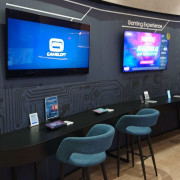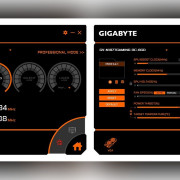Applied energistics 2
Содержание:
- Synopsis[edit]
- Applied Energistics 2 API
- Установка
- Setting Up Crafting Storage and Co-Processors
- Stamping out Circuits
- Steve’s First ME Network
- Contribution
- Materials you will need
- Issues
- Notes[edit]
- Notification*
- Storage Bus
- The Basic Network
- It’s Auto-crafting, Jim, but not as you know it
- Seed Growing & A Better Terminal[edit]
- Contribution
- Upgrades
- On Demand Automation[edit]
Synopsis[edit]
A basic ME Network starts with an ME Controller powered by a reliable energy source (EU RF or MJ) and an ME Drive or ME Chest with a Storage Cell inserted to be functional. Although the chest’s storage capacity is limited to one Cell, it has it’s purpose. The ME 1k Storage cell is the smallest and easiest to craft to get started, and can easily be upgraded to an ME 4k Storage cell as needed in time. Finally adding an ME Access Terminal will give access to the Network’s inventory. The layout of the components is versatile as long as they are touching each other or connected using ME Cable or ME Covered Cable.
The ME Controller is the hub of the network and coordinates and supply power to all components connected to it. From this basic set-up there are practically no limits to the ability to expand the network with a whole array of ME devices from remote access to full on demand Automation, the highlight of the ME Network.
Applied Energistics 2 API
The API for Applied Energistics 2. It is open source to discuss changes, improve documentation, and provide better add-on support in general.
Maven
Our authoritative Maven repository is Github Packages, which you can also use in your builds. Use of Github Packages
to authenticate with your personal access token.
AE2 is also available without authentication from Modmaven. You can use the following snippet as example on how to add a repository to your gradle build file.
When compiling against the AE2 API you can use gradle dependencies, just add
or add the line to your existing dependencies task to your build.gradle.
An example string would be for the API only or for the whole mod.
Builds obtained here or via maven should work in a development environment.
However the dependency might need to be wrapped in like
Установка
Основная статья: Установка модификаций с помощью Forge
- Установите Minecraft Forge.
- Скопируйте файл в папку .
Руды
| Изображение | Название | Описание |
|---|---|---|
| Кварцевая руда | Встречается на высоте от 16 до 72 блоков. Базовый элемент для создания всех предметов и блоков этой модификации. При разрушении выпадает 1-2 кварцевых кристалла и 0-1 кварцевой пыли. |
Материалы
| Изображение | Название | Описание |
|---|---|---|
| Кварцевый кристалл | Базовый предмет, необходимый для изготовления конвертирующих матриц и компонентов молекулярного сборщика. В некоторых крафтах взаимозаменяем с кварцем Нижнего мира. | |
| Кварцевая пыль | Используется для создания кремния, а также при крафте аметистовой пыли. В некоторых крафтах взаимозаменяем с пылью кварца Нижнего мира. | |
| Пыль кварца Нижнего мира | Используется для создания аметистовой пыли. В некоторых крафтах взаимозаменяем с кварцевой пылью. Используется для создания кремния. | |
| Аметистовая пыль | Основной компонент для создания МЭ кабеля. Используется при создании конвертирующих матриц. | |
| Аметистовый кристалл | Компонент для создания МЭ контроллера. | |
| Аметистовая жемчужина | Основной элемент при создании предметов беспроводной МЭ сети. | |
| Кремний | Используется при крафте процессоров. | |
| Конвертирующая матрица | Важный предмет, используемый в крафте машин, в которых происходит превращение предметов в энергию и наоборот. | |
| Энергетическая ячейка | Промежуточный компонент для создания предметов, потребляющих энергию. | |
| Беспроводной приёмник | Основной элемент при создании предметов беспроводной МЭ сети. |
Процессоры
| Изображение | Название | Описание |
|---|---|---|
| Механизм базового процессора | При переплавке образует МЭ базовый процессор. | |
| МЭ базовый процессор | Используется в крафте базовых механизмов и хранилищ. | |
| Механизм улучшенного процессора | При переплавке образует МЭ улучшенный процессор. | |
| МЭ улучшенный процессор | Используется в крафте более сложных механизмов и хранилищ. |
Инструменты
| Изображение | Название | Описание |
|---|---|---|
| Кварцевая кирка | Полностью идентичны своим железным аналогам. | |
| Кварцевая лопата | ||
| Кварцевый топор | ||
| Кварцевая мотыга | ||
| Кварцевый меч | ||
| Кварцевый нож | Служит для создания механизмов процессоров. | |
| Кварцевый ключ | Служит для поворота шин, настройки приоритетов хранения и демонтажа механизмов. Взаимозаменяем с ключами из BuildCraft, Thermal Expansion и OmniTools. | |
| Катализатор вибрации | Раскаляет блоки: превращает лёд в воду, булыжник в камень, песок в стекло, при использовании на руде выпадает сразу переплавленная руда. Использует энергию. | |
| Ускоритель энтропии | Охлаждает блоки: превращает лаву в обсидиан; камень в булыжник; воду в лёд. Использует энергию. | |
| Материальная пушка | Дальнобойное оружие. Стреляет шариками материи или самородками (в том числе и из других модификаций). | |
| Ручной дробитель | Аналогичен дробителю из IndustrialCraft 2, но не использует энергию. Вместо этого вы должны крутить рукоятку. Необходимое количество оборотов зависит от типа руды. Очень рекомендована на начальных этапах игры. |
Прочее
| Изображение | Название | Описание |
|---|---|---|
| Кварцевый блок | Декоративный блок. | |
| Железная пыль | Получается путём дробления железной руды в ручном дробителе. Совместима с другими модификациями. | |
| Золотая пыль | Получается путём дробления золотой руды в ручном дробителе. Совместима с другими модификациями. | |
| Мука | Получается путём дробления пшеницы в ручном дробителе. Совместима с другими модификациями. | |
| Маленький динамит | Уменьшенная версия стандартного динамита. |
Setting Up Crafting Storage and Co-Processors
Crafting storage is required alongside patterns. Crafting storage blocks come in 1K, 4K, 16K, and 64K byte variants (similar to storage cells). Crafting storage is essentially a buffer where items are held until the recipe is finished. Because of this, the longer a recipe is (let’s say you have 5 or more «chained» recipes for a single recipe) the more storage you will need to start that job.
Crafting Storage can be expanded in a multiblock structure. The only rules are that it must be cuboid and it must have at least 1 crafting storage block. The entire multiblock will only use 1 channel.
Co-Processors allow for recipes to be executed simultaneously amongst many interfaces. For example, if you had 4 encoded patterns for a 1x tin cable and each of those were inserted into 4 separate interfaces, having 3 Co-Processors would allow your ME network to leverage all 4 interfaces as part of the crafting recipe (this means it could use 4 assemblers simultaneously). By default, 0 co-processors in a network means that it can only do 1 interface’s worth of that recipe at a time. Co-Processors can be part of the crafting storage multiblock.
Stamping out Circuits
Okay, so now we’ve got the crystals and other materials we need, let’s get crafting!
Oh, before we can, we need to do one teeny tiny little… umm… humongous project. You remember earlier I told you about those dang presses that might take a bit because they are RNG-based chest loot? Umm… yea, you’re going to need all four before proceeding. And we need to build the machines that use them. Namely: the Inscriber.
The four different plates correspond to four different materials they are made of.
- Logic Press + Gold = Printed Logic Circuit
- Calculation Press + Pure Certus Quartz Crystal = Printed Calculation Circuit
- Engineering Press + Diamond = Printed Engineering Circuit
- Silicon Press + Silicon = Printed Silicon
To make a Processor, you take the material circuit on top, the silicon circuit on the bottom, and the redstone in the middle in an Inscriber.
Typically, when automating this process, you have one Inscriber per plate, plus another inscriber for making the processors themselves, for a total of five Inscribers set up. However, you can start off with just one if you are low on resources.
Steve’s First ME Network
Now then, I have some good news, and some bad news. The good news is that you don’t actually need a Controller to start up an ME Network! The bad news is… once you get to the point where you need one, it is going to get very complicated. But for now, hey… not too shabby.
You’re still going to need power it, and for that, you need an Energy Acceptor. For that, however, we get introduced to something new: Quartz Glass. Certus Quartz Dust and Glass in a checker pattern. Combine it with glowstone dust to make Vibrant Quartz Glass which will emit light! But the Power Acceptor itself just needs four Quartz Glass, four iron, and a Fluix Crystal. It’ll accept just about any ol’ kind of power, including Energy Units, Minecraft Joules, Redstone Flux, and Joules from either Mekanism or the identically named Joules from RotaryCraft.
Now that you’ve got that, we’re going to need some storage. For this, I’d strongly recommend an ME Drive. The reason for this is due to the number of channels, which is something we haven’t covered yet. Suffice to say, if you have more than eight channels, you need an ME Controller. And, unfortunately, each ME Chest is going to be its own independent channel, which pretty much makes ME Chests even less useful than they were previously. I wasn’t a fan of ME Chests before, but this pretty much makes them impossible to use for any practical purposes.
For this, we need some ME Cable, which means now we get to be introduced to Quartz Fiber. Three quartz glass in a row makes four quartz fiber. And yes, ME Cable is now significantly more expensive than it used to be. Quartz Fiber by itself can also be used to break up networks to avoid overloading channels, but still share energy. We’ll get into that when we start talking about channels, but for now, just know that it can be useful for things other than ME Cable.
The ME Drive takes up one channel. This will be important later. It is used to store the storage cells, but by itself doesn’t really do much. So now we need some storage. Generally, I suggest 4k storage cells. It can only store 63 items, just like any other storage cell, but it lets you store more stacks of the same items. But if you just want to make some basic 1k cells, that’s certainly a viable option, at least early on.
You start off making storage cells by making Storage Components, the most basic storage part there is. Four certus quartz and four redstone around a gold processor. Now, to make a 4k disk, you need a Storage Segment, which is three of these, and a Pure Certus Quartz processor, plus some more redstone around a quartz glass.
Okay, so now we’ve got some storage and the drive to put the disks in. Now we need to access it, which brings us to another significant change, and one which I am really in favor of: the ME Terminal. This isn’t a block anymore, it’s a multipart facade that goes on cable. More importantly, you can use a View Cell to filter what each individual ME Terminal accesses. And yes, you can upgrade them to ME Crafting Terminals. Do keep in mind that every Terminal also requires a Channel.
Contribution
Before you want to add major changes, you might want to discuss them with us first, before wasting your time.
If you are still willing to contribute to this project, you can contribute via Pull-Request.
The guidelines for contributing contain more detailed information about topics like the used code style and should also be considered.
Here are a few things to keep in mind that will help get your PR approved.
- A PR should be focused on content. Any PRs where the changes are only syntax will be rejected.
- Use the file you are editing as a style guide.
Getting Started
- Fork this repository
- Clone the fork via
- SSH or
- HTTPS
- Change code base
- Run to apply automatic code formatting
- Add changes to git
- Commit changes to your clone
- Push to your fork
- Create a Pull-Request on GitHub
- Wait for review
- Squash commits for cleaner history
If you are only doing single file pull requests, GitHub supports using a quick way without the need of cloning your fork. Also read up about synching if you plan to contribute on regular basis.
Materials you will need
Like before, this mod is very iron hungry, redstone hungry, very gold and diamond hungry, and introduces Certus Quartz. You’re also going to need power to run your system on.
New in this edition, however, you’re going to need four different Press Plates. These are ONLY found in Sky Stone Chests which are only found in the middle of meteors. If you can’t find a meteor on the surface, you may need to dig around a bit to find one. There’s also a compass you can use to find them, however it means you have to remove every last piece of Skystone from a meteor, or the compass will just point back to it. Joy. And there’s four different plates, but only two of them are found per chest. And no guarantees the next chest has anything unique. Skystone currently has only one use: the ME Controller.
Now, if you are on a multiplayer server, once all four have been located, you can copy them easy enough. But if you are playing single player, finding them all can be a royal pain.
Issues
Applied Energistics 2 crashing, have a suggestion, found a bug? Create an issue now!
- Make sure your issue has not already been answered or fixed and you are using the latest version. Also think about whether your issue is a valid one before submitting it.
- Go to the issues page and click new issue
- Enter your a title of your issue (something that summarizes your issue), and then create a detailed description of the issue.
- Do not tag it with something like or . When it is applicable, we will take care of it.
- The following details are required. Not including them can cause the issue to be closed.
- Forge version
- AE2 version
- Other mods and their version, when reporting an issue between AE and another mod
- A detailed description of the bug or feature
- To further help in resolving your issues please try to include the follow if applicable:
- What was expected?
- How to reproduce the problem?
- Server or Single Player?
- Screen shots or Pictures of the problem
- Mod Pack using and version?
- Keep in mind that some mods might use an outdated version of AE2
- If so you should report it to your modpack
- Click , and wait for feedback!
Providing as many details as possible does help us to find and resolve the issue faster and also you getting a fixed version as fast as possible.
Notes[edit]
- In Applied Energetics versions, released for Minecraft 1.5.0 and greater, Quartz has been renamed Certus Quartz to differentiate it from Nether Quartz added to vanilla MC.
- In the event that the Energy Supply to the ME Controller is interrupted, the whole network would be inaccessible until power is restored. For this reason it is highly recommended to install an UPS system using Energy Cells.
- Changing the ME Network (adding or removing a cable or block) will reset the Controller and cancel any pending automated crafting order.
- The ability to automate is not only extended to the traditionally BuildCraft compatible Mods like Forestry and Thermal Expansion, but also to machines from IndustrialCraft2, GregTech 4, MineFactory Reloaded, and more.
Mod-Specific Compatibilityedit
- BuildCraft — MJ usage, Pipe support Facade support, Wrench support, certain recipe changes
- Factorization — Barrel support
- GregTech 4 — Quantum Chest support
- IndustrialCraft2 — EU usage, electric tools, additional Macerator and Compressor recipes.
- JABBA — Better Barrel support
- Logistics Pipes — Pipe support (not in Ultimate Pack)?
- MineFactory Reloaded — Deep Storage Unit support
- Minecraft Forge’s Ore Dictionary — The Quartz Grind Stone will be able to use existing Pulverizer and Macerator recipes, ensuring the low-tech grinder will work with all ores added by mods supporting Forge’s Ore Dictionary
- Not Enough Items — Shift-Clicking the question mark to input recipes into a ME Crafting Terminal is supported.
- OmniTools — The OmniWrench will work like the AE wrench, rotating buses and such as expected.
- Thermal Expansion — RF usage, additional Pulverizer recipes.
- Universal Electricity — Power Usage (only available in the most current version available for MC 1.6.2-1.5.2).
- Extra Cells — Adds larger Storage Cells and adds the components necessary to store fluids directly into the ME Network.
Notification*
It is important to realize that Applied Energistics 2 (AE2) is a very different mod in the universe of Sky Factory 4 than it is in an isolated modded environment. The main reason for this is because the mod pack has disabled channels and removed a block called the ME Controller as it would be essentially useless in the absence of channels. The pack has also removed a number of other key elements of the mod such as a resource called Certus Quartz and a block called sky stone. Sky Factory 4 has instead altered crafting recipes accordingly so that these resources are not needed to progress. As a result, many aspects of the mod have limited usefulness and many of the tutorials or documentation on AE2 that are not made specifically for Sky Factory 4 will not be as useful. This guide will focus on the elements of AE2 which maintain functionality in the universe of Sky Factory 4.
Storage Bus
Storage buses connect to other inventory-like devices, such as JABBA barrels, and treats those inventories like they were storage cells, allowing you to insert/extract from those inventory-like devices. Right clicking on a storage bus will bring up a UI in which one can specifiy which items will be stored by this storage bus, essentially acting as a filter of sorts. Since the inventory is treated as a medium to hold item, like a storage cell, one could theoretically have a drive-less ME network and use pure storage buses instead. Storage buses can be very useful in instances where an upgraded barrel (or a super chest) can hold more of a single item than a storage cell ever could. Storage busses can also be used on Drawer controllers for easy mass storage of multiple types with only one storage bus.
Furthermore, connecting a storage bus to an ME Interface will expose the contents of the network connected to that Interface to the network connected to the storage bus. In other words, if Network A has a storage bus and Network B has an ME Interface, connecting Network A’s storage bus to Network B’s interface allows Network A to see and interact with all items stored in Network B. This interaction is not two-way. In the aforementioned scenario, A can see the contents of B, but B does not see the contents of A. This allows one to create subnetworks. This feature should be used sparingly for performance reasons.

Figure 1: Interface UI
The Basic Network
Now comes the fun part. A basic AE2 network consists of a powered Energy Acceptor, an ME Drive or ME Chest, some cable, and a terminal. Your items are stored in items called storage cells which come in four different sizes: 1K, 4K, 16K, and 64K bytes of storage. Regardless of size, each storage cell can only hold 63 unique items. The difference between the ME Chest and the ME Drive is that the chest has a built in terminal, but can only hold 1 storage cell as opposed to the ME Drive which needs an external terminal to access your items, but can store up to 8 storage cells. The ME Chest’s terminal can also only access items within itself even if it is connected to other ME Drives.
The energy acceptor can be placed anywhere in the network, as long as it is connected, meaning adjacent, to an ME Drive or a cable in the network. What the energy acceptor does is take energy from other mods/forms and convert it to a usable form for AE2. ME Drives which are placed next to each other will connect to each other as if they are wired together, so there is no need to lay cables connecting every ME drive. With that said, anything else that you want to be in the network will have to be connected with cables, including a terminal. In order to create storage space in the network for items, you have to craft some storage cells and place them into your ME Drives, or in your ME Chest. When you put storage cells into the ME Drives, you can see a visual update on the front of the ME Drive. When they are powered, ME Drives will show green lights in the slots that contain almost-empty storage cells, orange lights in the slots that contain semi-filled storage cells, and red lights in the slots that contain full storage cells. Additionally, most of the devices, including ME Drives, can have a priority set so that items will always try to go into devices with higher priorities first. The last thing to do is place a terminal onto some cable and right click the terminal to open up your AE2 network. You can see any items in the network using the terminal, as well as put items into and take items out of the system.
You will have to use the same type of cable for each network because different types of cable do not connect to each other. This is useful for creating different networks using different colored cables.
It’s Auto-crafting, Jim, but not as you know it
Auto-crafting in AE was absolutely amazing. It got hit with a huge nerf-bat. But it still has its uses, so let us go over it.
First off, automating any kind of crafting requires a minimum of one Crafting CPU. Yes, even auto-crafting using ME Interfaces require this to be hooked up somewhere. The CPU multiblock needs to be «cuboid» (a rectangular prism), and must be created using Crafting Storage, Crafting Co-Processing Unit, and Crafting Unit blocks. The smallest possible Crafting CPU is just a 1k Crafting Storage block attached to the ME Network. Crafting Storage allows more complex crafting operations; Crafting Co-Processing Units increase the number of operations the Crafting CPU can perform at a time. Crafting Units do not enhance the Crafting CPU in any way. They only serve as filler for the multiblock.
Basically, any sort of auto-crafting job requires a certain amount of processing power. The more complex the recipe, and the more of that item you are wanting, the more CPU it takes to make the job. It can only perform one task at a time, the Co-Processing unit gives it the ability to process one additional unit per unit simultaneously.
Crafting using other machines is about the same as it always was, except that it will eat up CPU and processing cycles while it is running, and it requires the Crafting CPU to function. So a slight nerf, but otherwise business as usual (although don’t forget that each Interface requires its own channel!), not too bad.
But what if I just want regular old crafting recipes auto-crafted? Well, for that, we look to the Molecular Assembler. No longer a multi-block structure, this stand-alone device has two modes. If you put an Encoded Pattern into it, then it will be able to craft that one pattern independently. Kinda boring, but if you just want one item auto-crafted, it doesn’t need the CPU in this mode. The other mode requires you to place it adjacent to an ME Interface, and you can not put an Encoded Pattern into it. Basically, any of the Encoded Patterns in the attached ME Interface can use the Molecular Assembler to perform that crafting task. This is not an instantaneous task, it now takes time to craft. However, you can have multiple Molecular Assemblers attached to a single ME Interface as a load-sharing program.
For example, if you have five MA’s attached to an Interface, and you ask for 20 torches, and that interface has an Encoded Pattern that knows about Torches, it will send one crafting request to each of the five MA’s attached to it and they will all produce it separately. So it will run 5x as fast as one that just had a single one for large jobs. However, if you just wanted one diamond pick, it would still only use the one MA for the task.
Since the Crafting CPU can only perform a single task at a time, there’s a reasonable limit to how many Interfaces are used in this way at any given time. However, you can tweak the performance of your crafting system by making a honeycomb of MA’s and Interfaces, and if you set up your recipes properly, you can get some good optimization.
For example, let’s take the old BuildCraft Diamond Gear recipe, which requires a lot of sub-combines. Now, you could put all of the sub-combines into a single ME Interface, since each successive recipe requires the ingredient from the previous one. However, if you wanted to set up, for example, a couple stacks of torches and a couple stacks of bread being made with three wheat each, then if both of these recipes are in the same ME Interface, you’re going to hit a log-jam, because the ME’s are going to be too busy making torches to make bread. But, if you have a Co-Processor in your CPU arrangement, and you decide to build two Interfaces, each with their own separate set of MA’s, then they could run parallel. Of course, you don’t often make both torches and bread at the same time. So you could have one interface with one, one interface with the other, and you could share an MA. Now, that MA is either going to be making torches or bread, however you 1) save the cost of having to make another MA, 2) still have load-sharing capability, and 3) if you do make them in bulk at the same time, only one MA is going to be occupied with one or the other recipe.
So when making your crafting wall checker boarded with Interfaces and Molecular Assemblers, try to make sure that anything you are likely to be requesting in bulk at the same time not be adjacent, however any serial or sequential building can all be done from the same ME Interface. You can also have multiple ME Interfaces with the same recipe if you are really worried about speed of bulk orders.
Seed Growing & A Better Terminal[edit]
You’ve been getting stuff into your terminal, but you want a way to craft things inside the terminal. It’s time to upgrade to a crafting terminal!
Now, you need a ME Terminal, a Crafting Table, and a Calculation Processor. For the calculation processor, you need Pure Certus Quartz Crystal, which you get from growing Certus Quartz Seed in water. However, this process is extremely slow, taking several hours. Its time for a new machine, a Crystal Growth Accelerator. It takes AE power in from the top face. Simply place it next to your water puddle, and the accelerator will speed up crystal seed growth inside the puddle of water. More accelerators will further increase the speed. With 1 accelerator, it takes 12 minutes to grow a seed. With 2, time gets reduced to less than 10 minutes (confirmation needed).
When the seed finishes growing, you can use the pure certus quartz to make the processor, which you should be pretty good at by now. Once you craft the Crafting Terminal and place it again, you will notice a new crafting interface inside the terminal, making your crafting work easier.
Now you mastered the art of seed growing, you should know that you can also grow fluix crystals into its pure form.
Contribution
Before you want to add major changes, you might want to discuss them with us first, before wasting your time.
If you are still willing to contribute to this project, you can contribute via Pull-Request.
The guidelines for contributing contain more detailed information about topics like the used code style and should also be considered.
Here are a few things to keep in mind that will help get your PR approved.
- A PR should be focused on content. Any PRs where the changes are only syntax will be rejected.
- Use the file you are editing as a style guide.
Getting Started
- Fork this repository
- Clone the fork via
- SSH or
- HTTPS
- Change code base
- Add changes to git
- Commit changes to your clone
- Push to your fork
- Create a Pull-Request on GitHub
- Wait for review
- Squash commits for cleaner history
If you are only doing single file pull requests, GitHub supports using a quick way without the need of cloning your fork. Also read up about synching if you plan to contribute on regular basis.
Upgrades
In AE, you upgraded a basic bus to a fuzzy or precision bus when you wanted it to run stacks at a time. In AE2, however, this is handled differently.
There are various Upgrade Cards you can craft and slot into various components. For example, if we wanted to import five specific items, we’d want to put a Capacity Card upgrade into that import bus so it can handle more than one unique item. If we’re wanting to add the capability of using fuzzy logic, then you’d add in a Fuzzy Card. You can put an Acceleration Card into a bus to make it process more things at a time, or into a Molecular Assembler to make it craft faster.
Upgrade Cards aren’t cheap, but they can be used quite effectively.
On Demand Automation[edit]
Orchestrated by the ME Molecular Assembler Chamber, an expansible multi-block structure that is the central processing unit of ME automation. Crafting information is stored by encoding ME Blank Patterns with recipes using an ME Pattern Encoder. The resulting ME Encoded Pattern is then stored in the Assembler Chamber which makes these items become available to the Player on demand via the ME Access Terminal provided all the required items are available in the system or are encoded. This automation is easily extended to machine processing and managed by ME Interfaces, ME Import and Export Bus connected by ME Cable and Itemduct. This allows to pulverize, Smelt, and even Transpose Liquids needed to craft anything the Player orders.
Applied Energistics also adds a new Ore to world generation, the Certus Quartz, a main resource used in the crafting of ME Tools and components. When the ore is mined, there is also a chance of Certus Quartz Dust being dropped. If more Quartz Dust is needed, it can also be produced by grinding up the Quartz Crystal in Player’s available grinding machine.







